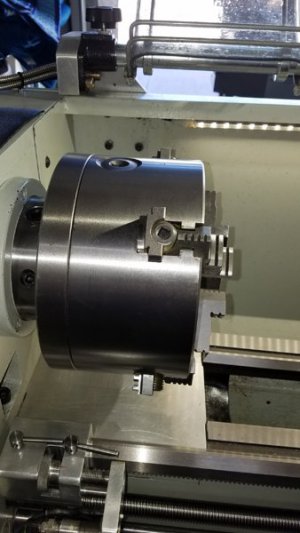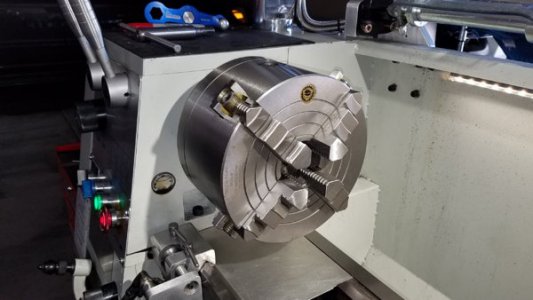A 6 jaw chuck can have more issues with swarf build up, but this is often an issue no matter what chuck you use. Standard 4J independent chucks often have fairly wide and coarse jaws, so you are limited to mostly larger stock and they take longer to setup (dial in the TIR) if an independent. The latter is time consuming if you do any repeat work. They do make both 4J and 6J in a scroll versions, at that price level I would strongly recommend going with a set-tru type of chuck. Bison does make a 4 jaw combination chuck which has both a scroll and independent jaws. A few of the forum members use this chuck, they work very nicely and their 8" chuck can hold small stock down to 0.200". The repeatability of the scroll is around 0.002", and with the tweaking of the independent jaws you can get the TIR down to nil and holds the work very securely. I do find that often stock may not be perfectly round or rough on the surface, so a standard scroll 4J or 6J may not apply symmetrical pressure on all the jaws. With a combination chuck, you can tweak each jaw which may be a benefit. I machined twin keys for my combo Bison, takes about 30 seconds to tweak the TIR, and love the scroll for getting parts in and out quickly.
If you look at the Bison chucks, the price for a Set-Tru 6J is less expensive than their 4J combination in a 8", the set-tru backing plate is more expensive so the total price is probably pretty close. They have gone up about 25% in cost since I purchased mine about 4 years ago. Since the combination chuck takes standard backing plates (you may need to tweak the register) it gives you more options. On my Bison 8" combination, I use a Gator backing plate, which was 1/2 the price of the Bision version. Quality Machine Tools sells Bision chucks, may be worth checking into, Grizzly also sells them and sometimes you can get a 5% discount when you sign up for their catalogue.
So other less expensive options, Gator is somewhat hit or miss these days, and the pricing is often about10-15% less than Bison so not worth the difference in my book. Shar's carries their version of a Zero-Set 6J scroll chuck that another forum member purchased and was pleased with it's performance, but I do not believe they make a corresponding DIN 55027 back plate. If you do not use the larger chuck frequently, then maybe consider a better quality 4J independent or a set-tru 3J scroll in an 8". Unless you do a lot of thin stock, then a 6J scroll does not add a lot.





